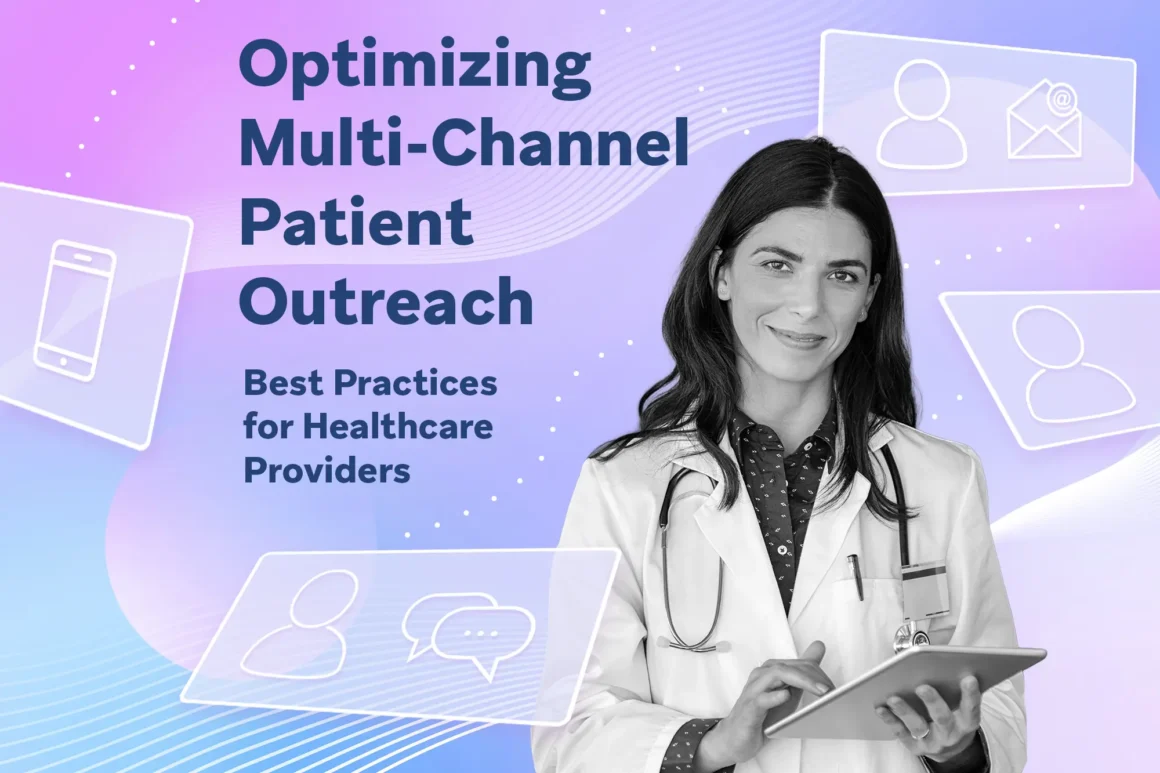Effective patient outreach across multiple channels is key for healthcare providers to keep patients engaged and healthy. This article offers practical strategies to help improve patient communication and satisfaction.
Key Takeaways
- Effective patient outreach enhances relationships, improves health outcomes, and reduces healthcare costs through personalized and multi-channel communication.
- Utilizing technology, such as automated reminders and conversational AI, streamlines patient engagement and promotes adherence to care plans.
- Continuous improvement of outreach strategies relies on gathering and analyzing patient feedback, ensuring care is responsive to patient needs.
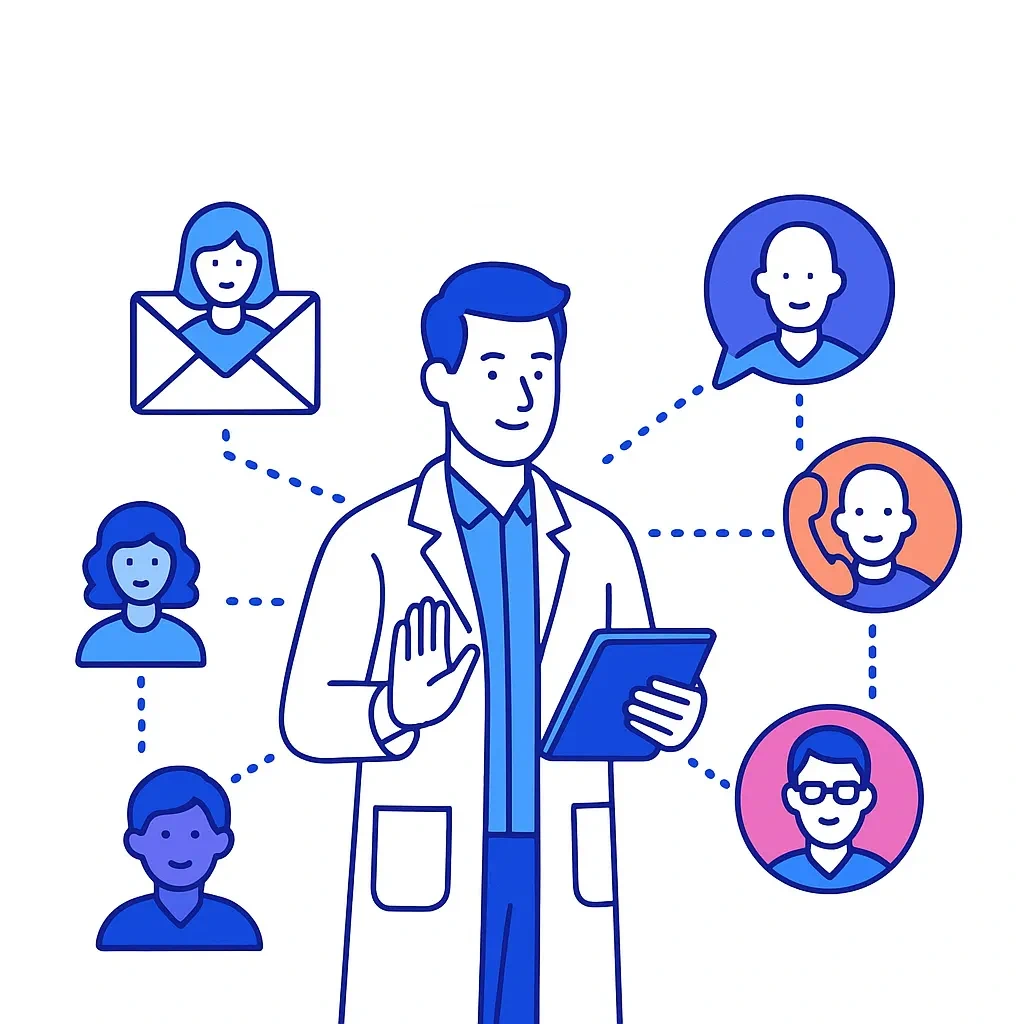
Introduction to Patient Outreach
Patient outreach is a cornerstone of modern healthcare, encompassing the various ways healthcare providers communicate with patients to promote wellness, encourage engagement, and drive better health outcomes. For most healthcare organizations, a robust patient outreach strategy is essential for building strong relationships, increasing patient satisfaction, and supporting patients throughout their healthcare journey.
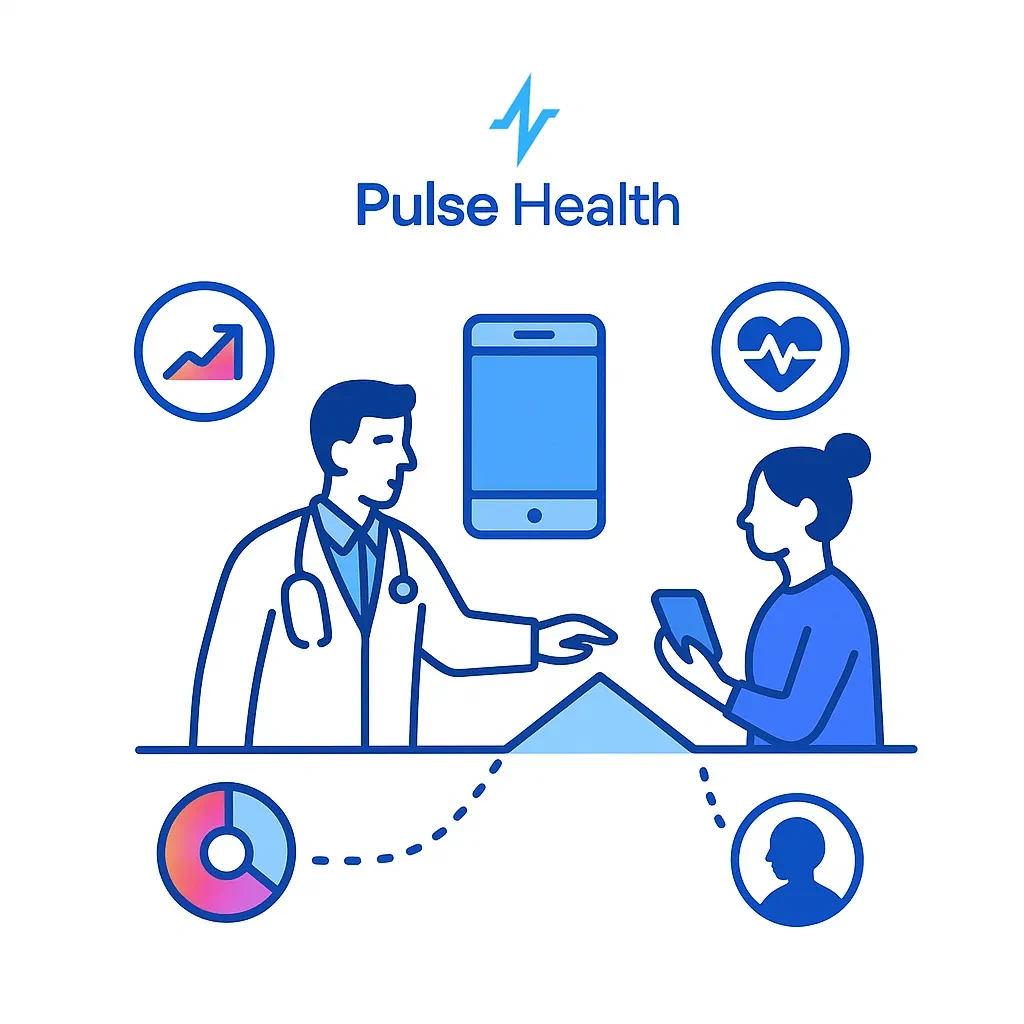
By leveraging technology — such as automated outreach systems and electronic health records — healthcare providers can streamline communication, making it more efficient and impactful.
Effective patient outreach not only keeps patients informed and engaged but also empowers them to take an active role in their care, leading to improved patient outcomes and overall health outcomes.
As healthcare organizations continue to prioritize patient engagement, investing in innovative outreach solutions becomes increasingly important for achieving better health outcomes and enhancing the patient experience.
Understanding Patient Needs
A successful patient outreach strategy begins with a deep understanding of the unique needs and preferences of the patient population.
Healthcare providers must consider factors such as health conditions, medication adherence, and preventive care requirements to ensure their outreach efforts are relevant and effective.
By analyzing patient data and gathering patient feedback, healthcare organizations can tailor their communication and educational materials to address specific concerns and challenges faced by their patients.
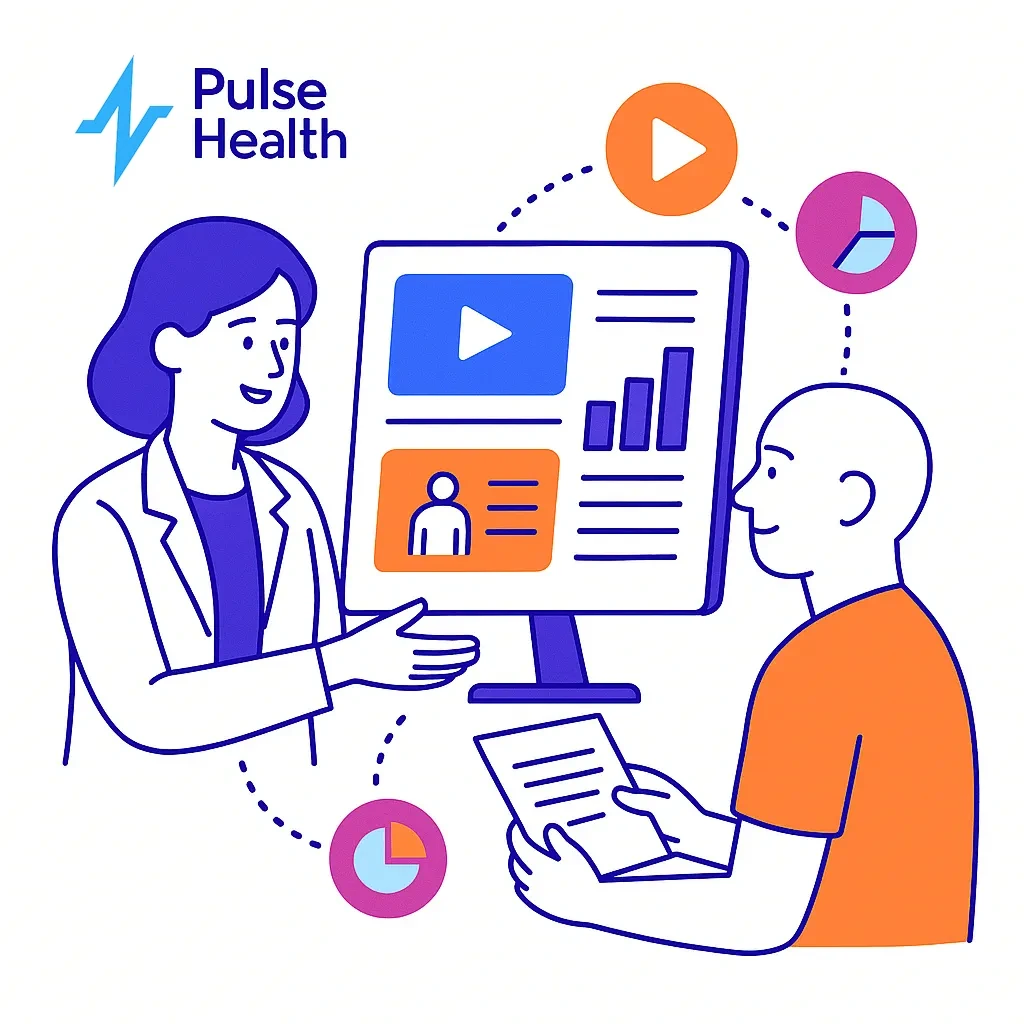
Patient education plays a vital role in this process, equipping patients with the knowledge and confidence to make informed decisions about their health. When healthcare providers align their outreach strategy with the needs of their patients, they foster greater patient engagement, improve satisfaction, and support better health outcomes across diverse patient populations.
Building a Patient Outreach Strategy
Developing a comprehensive patient outreach strategy requires a holistic approach that supports patients at every stage of their healthcare journey.
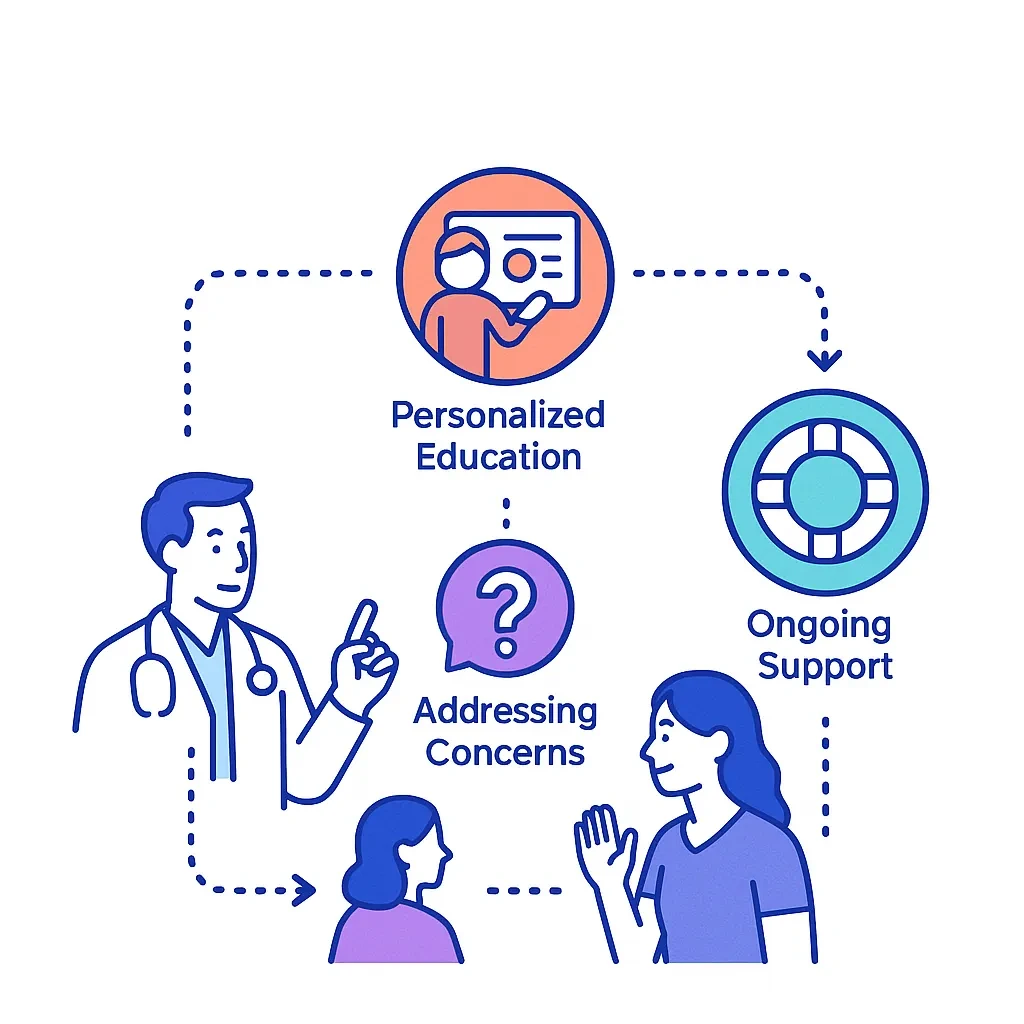
Healthcare providers should focus on engaging patients through personalized education, addressing patient concerns, and offering ongoing support.
Key components of an effective outreach strategy include automated reminders for scheduled appointments, online scheduling options, and two-way communication channels that allow patients to ask questions and provide feedback.
Digital tools can help track progress and ensure that outreach efforts are both timely and relevant. By integrating these elements, healthcare organizations can create a strategic advantage, enhance patient outcomes, and ensure that patients remain engaged and informed throughout their care experience.
Understanding Patient Outreach
Patient outreach involves ongoing communication to assist patients in maintaining their health and is crucial for early problem identification. It is a proactive approach that connects with patients personally, builds long-term relationships, and enhances overall patient engagement and satisfaction.
Effective patient outreach programs also increase accessibility to healthcare services, facilitating better health outcomes.
By keeping patients connected to their care team, effective outreach ensures coordinated and comprehensive care, making it easier for patients to receive the support they need.
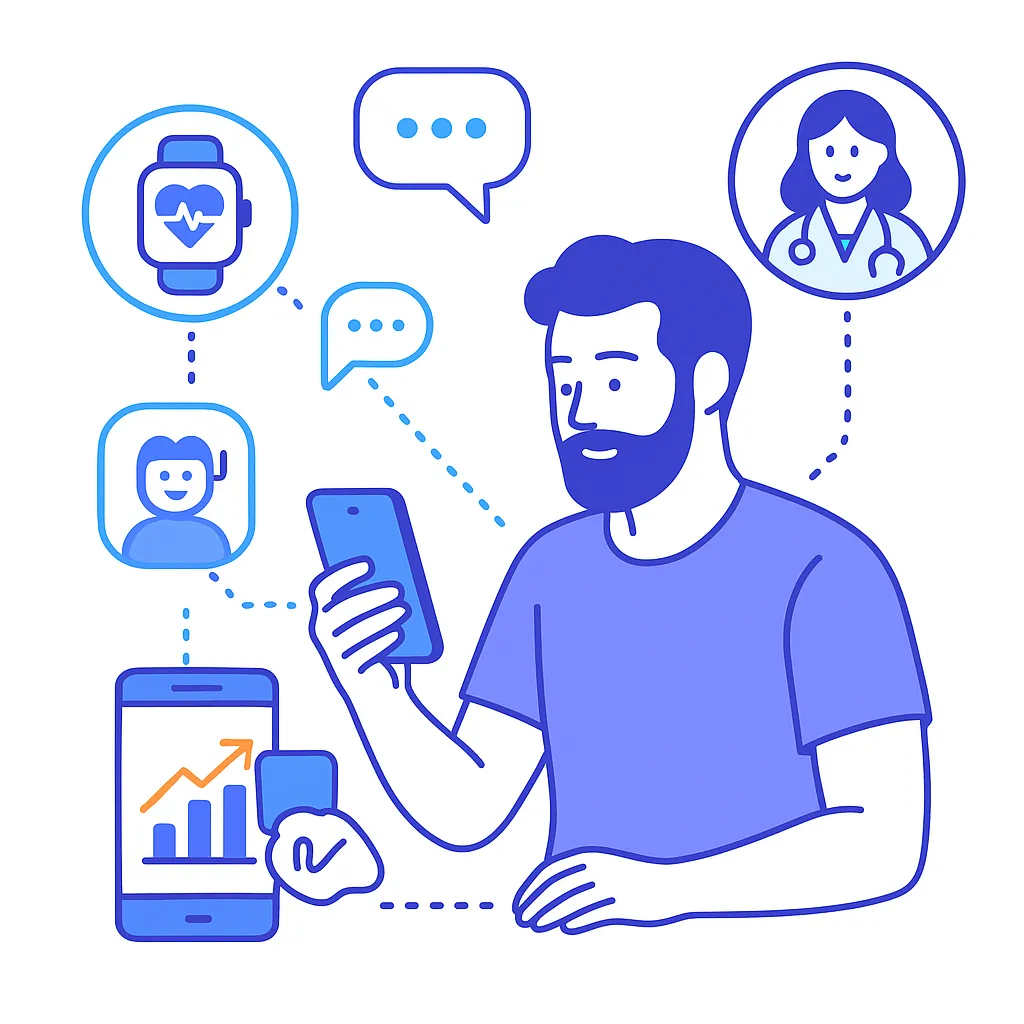
Regular communication not only improves patient outcomes but also prevents minor health issues from escalating into serious conditions, ultimately reducing healthcare costs. Tailoring communication to specific patient populations ensures that the outreach strategy is effective and resonates with the patients’ unique needs.
Key Components of Effective Patient Outreach
Optimizing patient outreach requires focusing on personalized communication, multi-channel strategies, automated appointment reminders and follow-ups, and effective pre visit prep. These elements form the backbone of an effective patient outreach strategy, ensuring that patients are engaged and informed throughout their healthcare journey.
Let’s delve into each of these components in detail.
Personalized Communication Strategies
Personalizing patient messages addresses the specific needs of the patient, enhancing engagement. Considering individual patient characteristics, preferences, and needs allows healthcare providers to tailor their outreach strategies for better patient connection. Tailored messages and personalized education significantly increase patient engagement, making patients feel valued and understood.
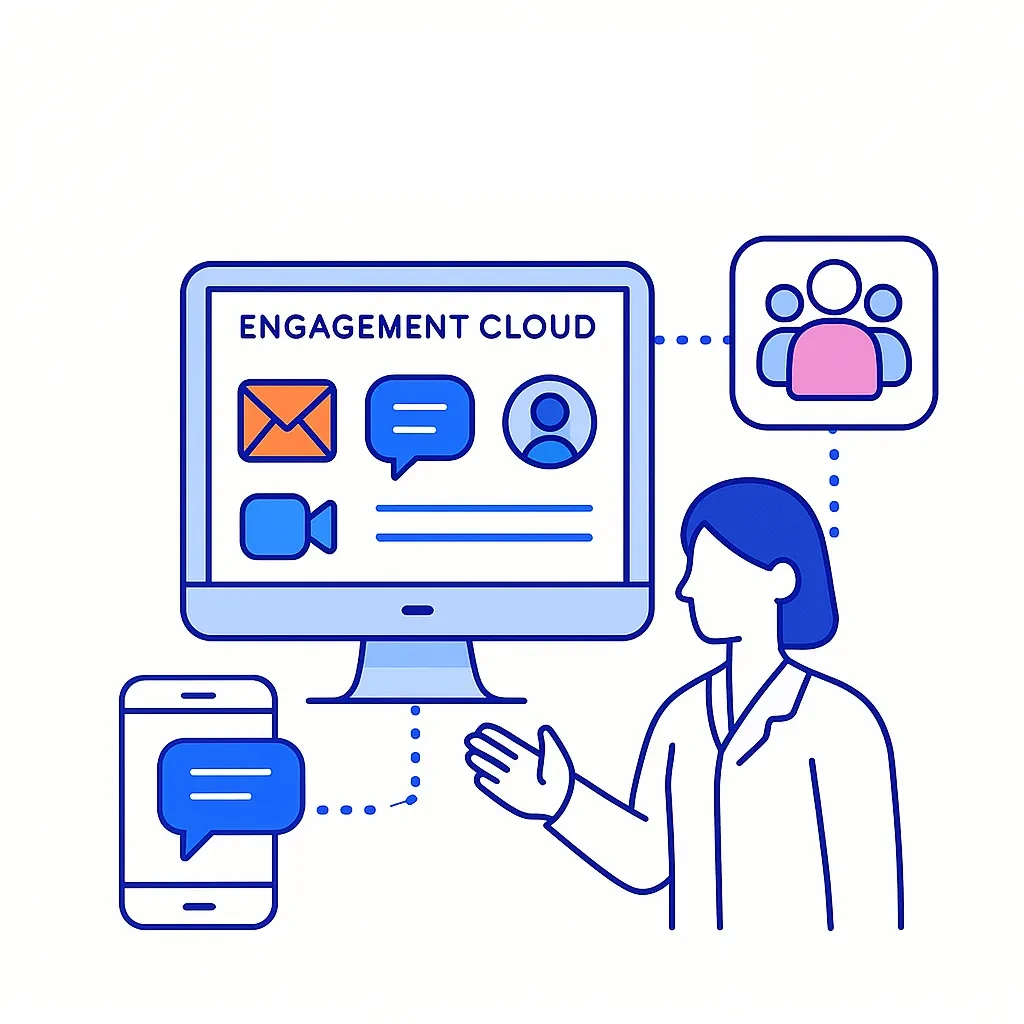
Automated tools, such as those from Pulse Health, deliver personalized messages via phone calls, text messages, and endless phone calls, alleviating the burden on healthcare staff.
Implementing two-way communication methods, such as conversational AI, can further enhance patient access and engagement by providing timely and relevant information.
These tools can be tailored to specific populations, ensuring that the right patients receive the right messages at the right time. Embracing personalized communication strategies enhances adherence and fosters stronger patient connections.
Leveraging Multi-Channel Communication
Leveraging multiple communication channels in today’s digital age is key for effective patient outreach. These channels include:
- Emails: send customized messages directly to patients’ inboxes, enhancing outreach.
- Direct mail: provides tangible information, helping in the acquisition of new patients and retention of existing ones.
- Traditional methods: phone calls and paper mailers remain effective for engaging patients.
- Texting technology: can be leveraged for scheduling appointments, confirming visits, answering questions, sending reminders, and reminding patients to pay outstanding balances.
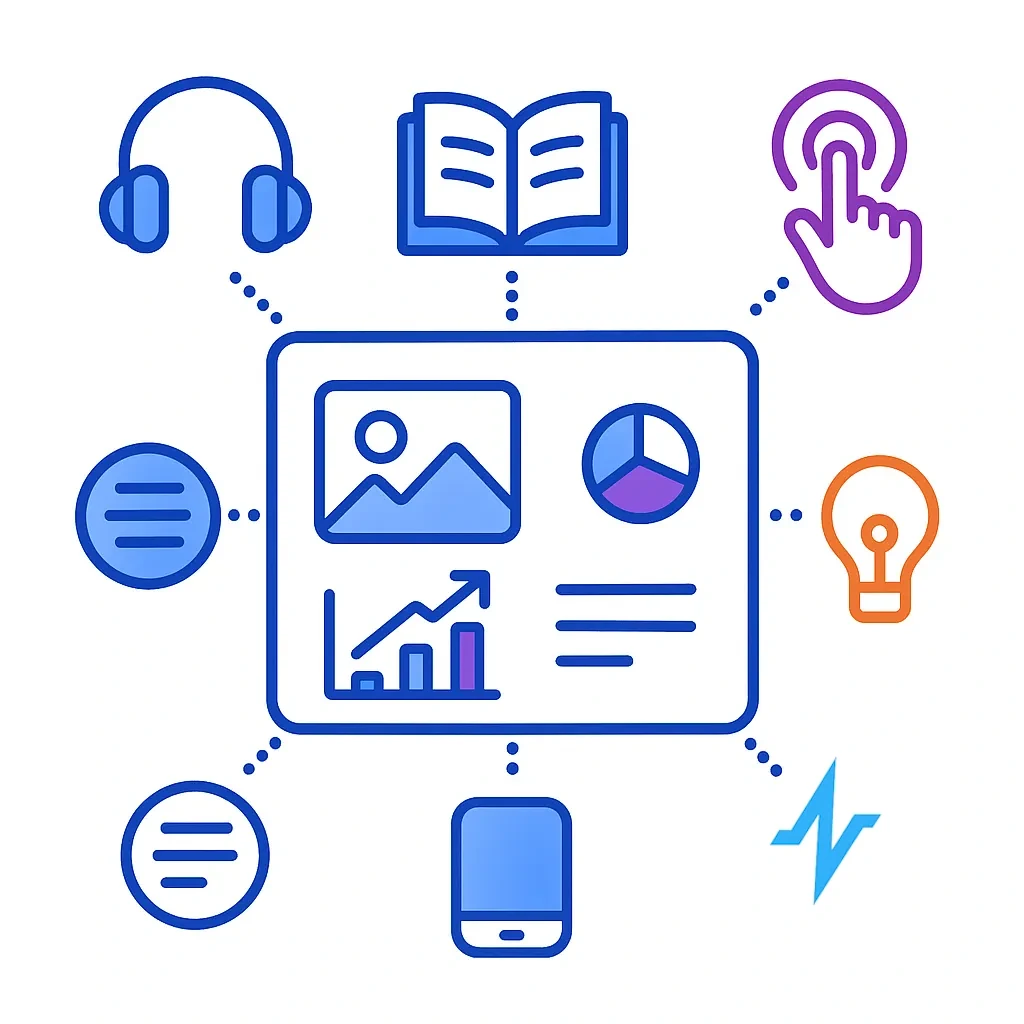
Consistency in patient communication is crucial as it prevents confusion and ensures timely, relevant information is shared. Emails and text messages effectively engage patients, making it easier to share important information. Healthcare providers should communicate through patients’ preferred channels to enhance engagement.
Teleconferencing or video consultations enable direct communication between healthcare providers and patients, catering to modern preferences. Automation tools, such as those provided by the Pulse Engagement Cloud, improve interactions through targeted messaging. Pre-built integrations offered by Pulse Health streamline marketing efforts and data management to enhance communication effectiveness.
Automating Appointment Reminders and Follow-Ups
Automated reminders improve adherence to appointments, significantly reducing no-show rates. Incorporating automation and follow-ups significantly improves overall effectiveness and enhances patient engagement. Key points include:
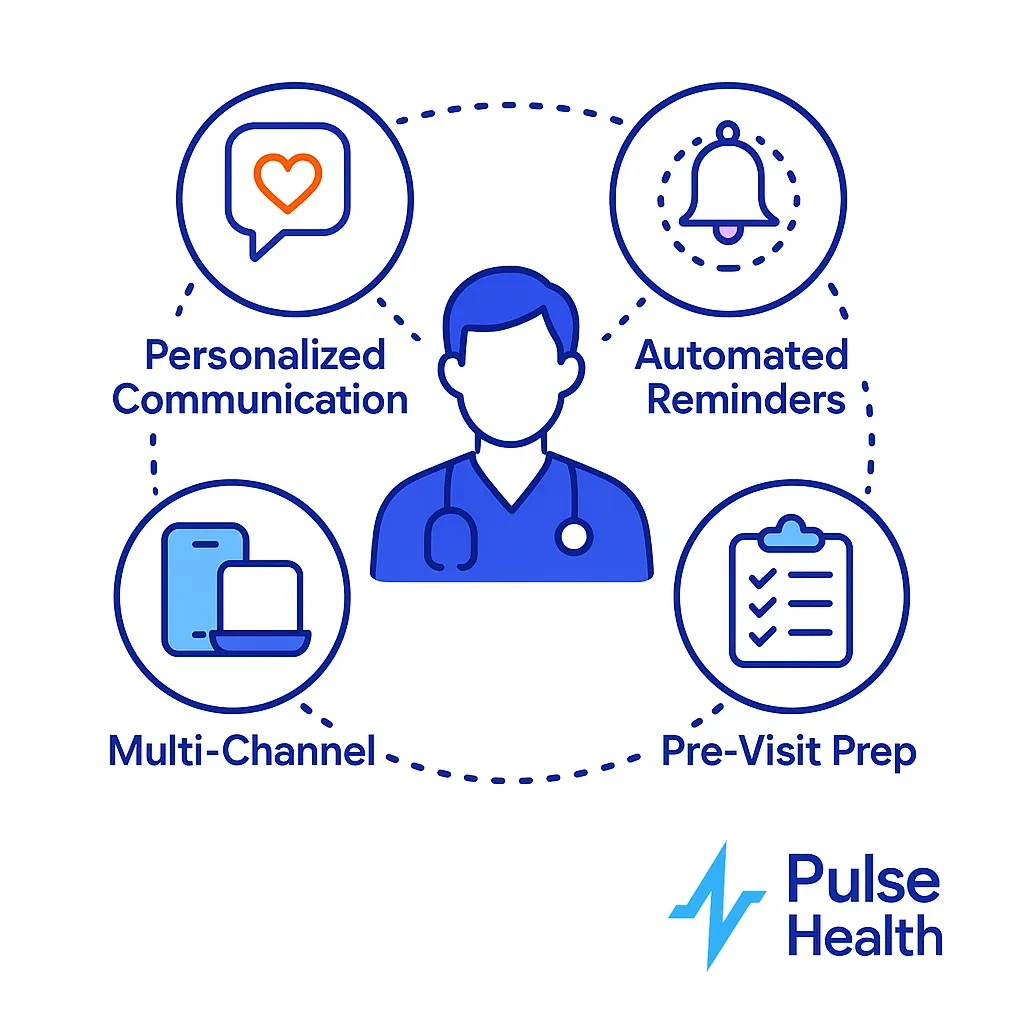
- Appointment reminders can be sent through various communication methods, including email, text messages, and phone calls.
- Follow-ups are crucial to ensure patients keep their appointments and address any concerns.
- Automated systems reduce staff time spent on the phone.
Moreover, online scheduling platforms enable patients to book, reschedule, and receive reminders about their upcoming appointments, leading to increased patient satisfaction and better health outcomes. By automating these processes, healthcare providers can ensure that patients remain engaged and compliant with their care plans, ultimately improving adherence and reducing healthcare costs.
Streamlining Patient Outreach
Efficiency is critical for healthcare organizations aiming to maximize the impact of their patient outreach strategy while minimizing administrative burdens. Automated outreach solutions and electronic health records can significantly reduce the need for endless phone calls and manual paperwork, freeing up staff to focus on delivering high-quality patient care.
Streamlining patient outreach not only improves response rates and patient satisfaction but also supports practice growth by allowing providers to reach more patients with fewer resources. Additionally, a streamlined outreach strategy enables healthcare providers to identify areas for improvement and continuously improve their services, ensuring that patient needs are met effectively and efficiently.
Enhancing Patient Engagement Through Technology
Utilizing technology is crucial for optimizing communication in patient outreach. From digital tools to conversational AI and remote patient monitoring, technology offers innovative solutions to enhance patient engagement, education, and overall health outcomes. These technologies also help healthcare providers connect with patients remotely, enabling continuous monitoring, improved engagement, and better collaboration.
Let’s explore how these technological advancements can be integrated into patient outreach strategies.
Utilizing Digital Tools for Patient Outreach
Secure messaging systems and online access to medical records establish two-way communication in patient outreach. Automated communication tools enhance scalability and targeting in outreach, allowing healthcare providers to reach more patients effectively. Digital health tools can adapt to user profiles, promoting better communication and patient involvement by tailoring the outreach. Using electronic health records can streamline the delivery of patient education materials, ensuring timely and relevant information is shared. EHRs and digital tools can also be used to proactively remind patients about preventive screenings, supporting early detection and improved patient engagement.
Screen-sharing during virtual visits enables visualization and understanding of patients’ conditions, increasing their participation.
Encouraging patients to ask questions promotes engagement. This participation creates a collaborative learning environment during consultations.
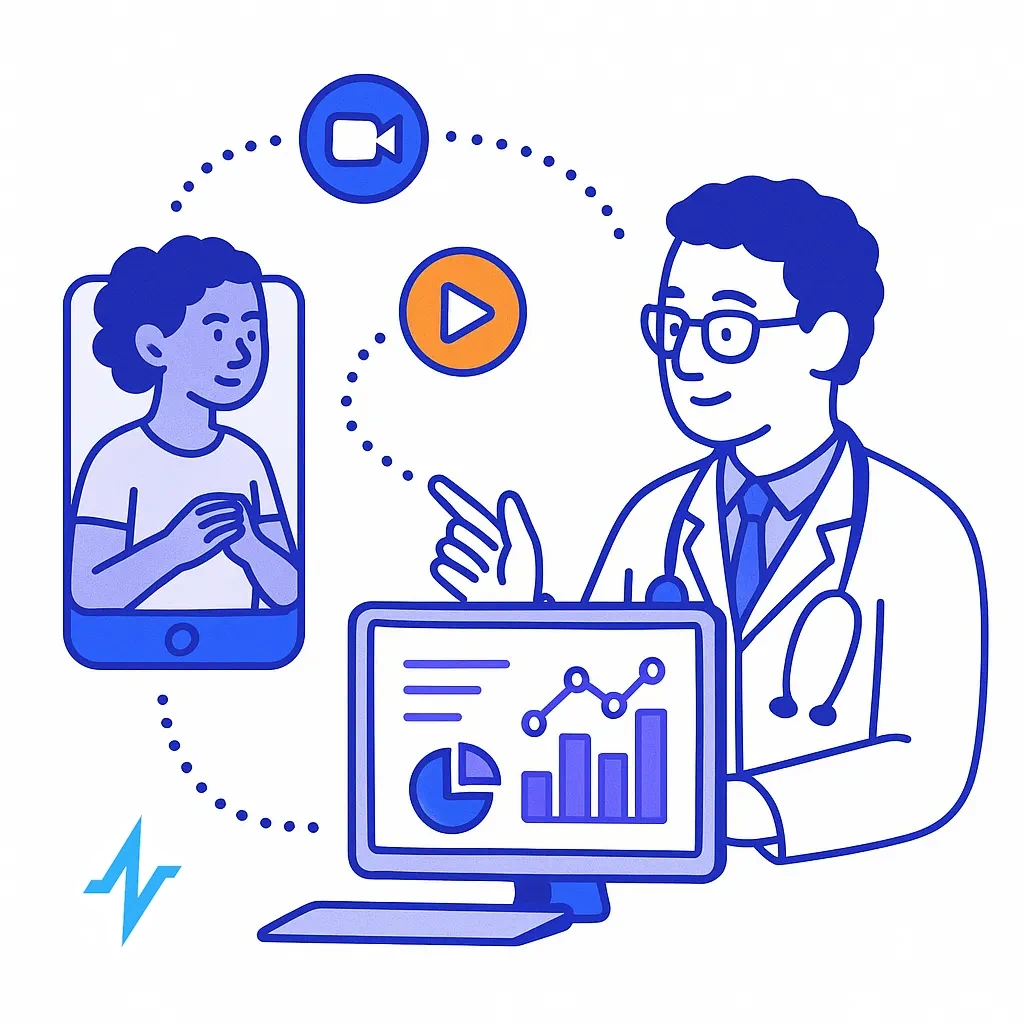
Automated patient outreach via text messaging drives preventative care, enhances chronic disease management, and improves medication adherence. Personalized education and self-management resources delivered through virtual care platforms can lead to better health outcomes by expanding access to health information. Automated outreach can generate benefits in healthcare, such as reducing hospital admissions and improving health outcomes.
Implementing Conversational AI
Conversational AI offers 24/7 availability, providing patients with quick and accurate information, along with personalized interactions.
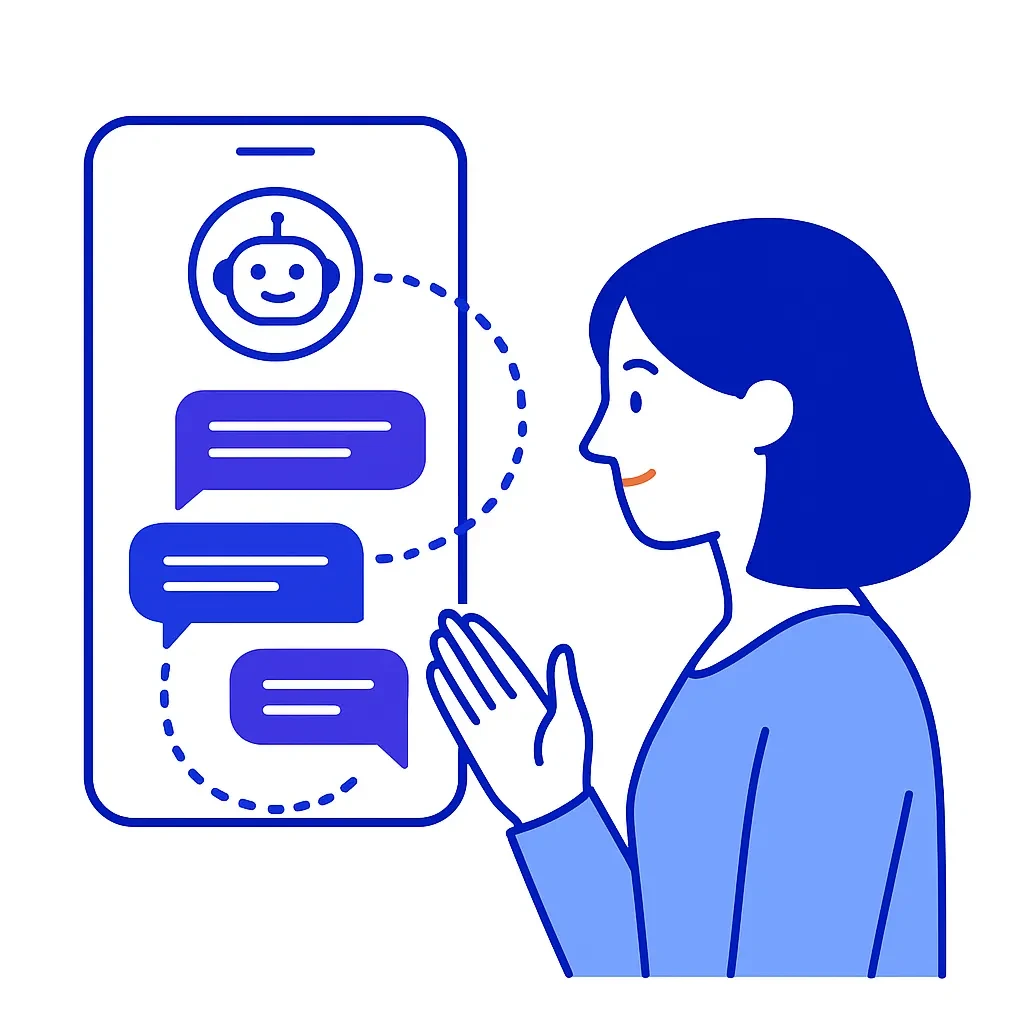
Common uses of conversational AI in healthcare include appointment scheduling, rescheduling, and clinical outreach.
Conversational AI enables increased access to care and can be tailored to meet the needs of targeted populations.
Integrating conversational AI enhances patient engagement, reduces administrative burdens, and improves the overall patient experience.
Remote Patient Monitoring
Remote patient monitoring technologies facilitate continuous care and help in early detection of health issues. These devices are used for tracking symptoms or medication adherence and can collect vital signs, symptom reports, and adherence data. The wealth of data generated by remote patient monitoring allows for timely feedback and guidance for progress tracking and self-care adjustments.
By making healthcare more accessible and convenient, remote patient monitoring and virtual care platforms encourage patients to seek care promptly, which can lead to better health outcomes.
Analyzing the data from remote monitoring can help healthcare providers identify patterns and trends in health status, supporting improved health outcomes.
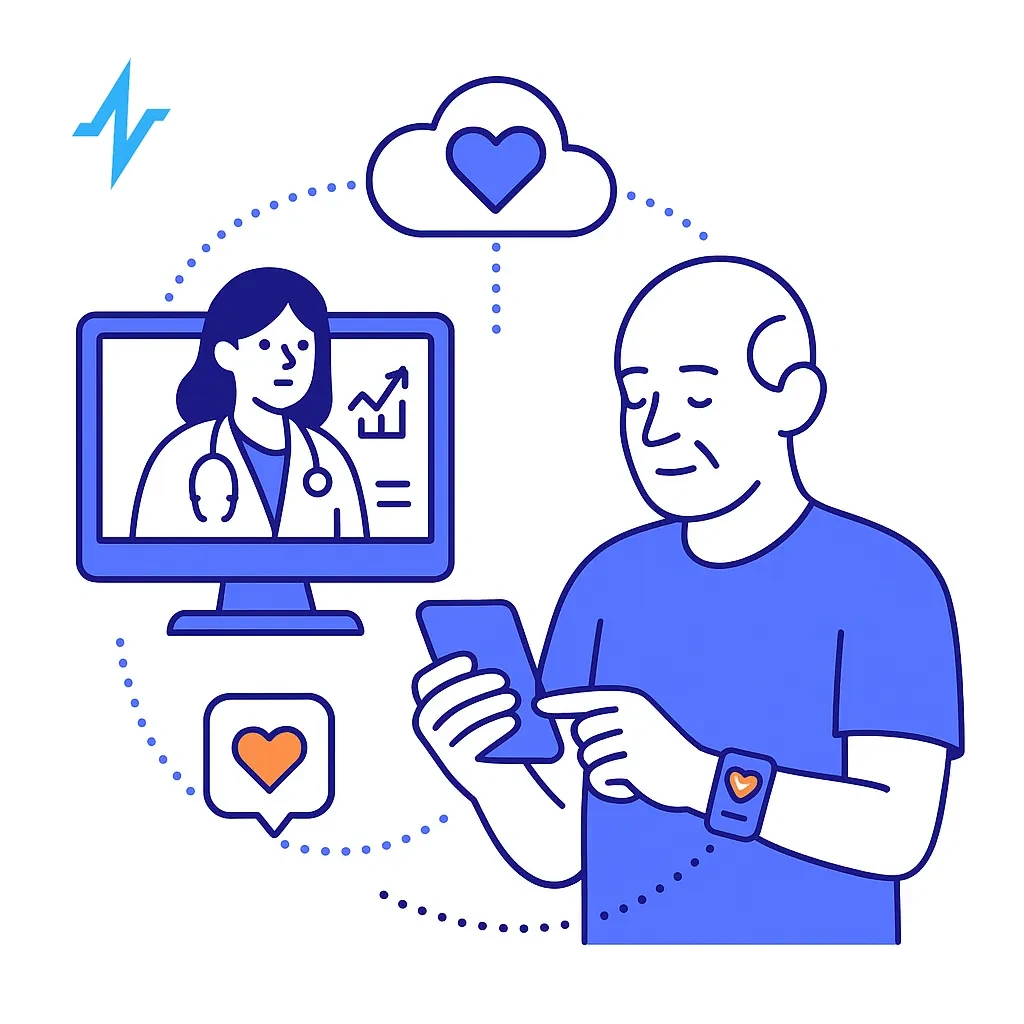
Leveraging remote patient monitoring offers personalized care, enhances chronic disease management, and keeps patients engaged in their healthcare journey.
Best Practices for Patient Education and Empowerment
Patient education and empowerment are critical components of effective patient outreach strategies. Providing patients with the knowledge and tools to manage their health enhances engagement, improves outcomes, and fosters a collaborative care environment.
Providing Accessible Educational Content
Educational materials, videos, or interactive tools can be offered as tailored support for patients. Comprehensive health education materials include multimedia formats like videos and infographics. Visual aids, such as animations and infographics, play a crucial role in enhancing patient education. Utilizing multimedia formats, including videos and interactive modules, can effectively engage patients. Educational resources should be provided in various formats, such as written materials, audio recordings, and video presentations.
Effective methods to reinforce learning in patient education include:
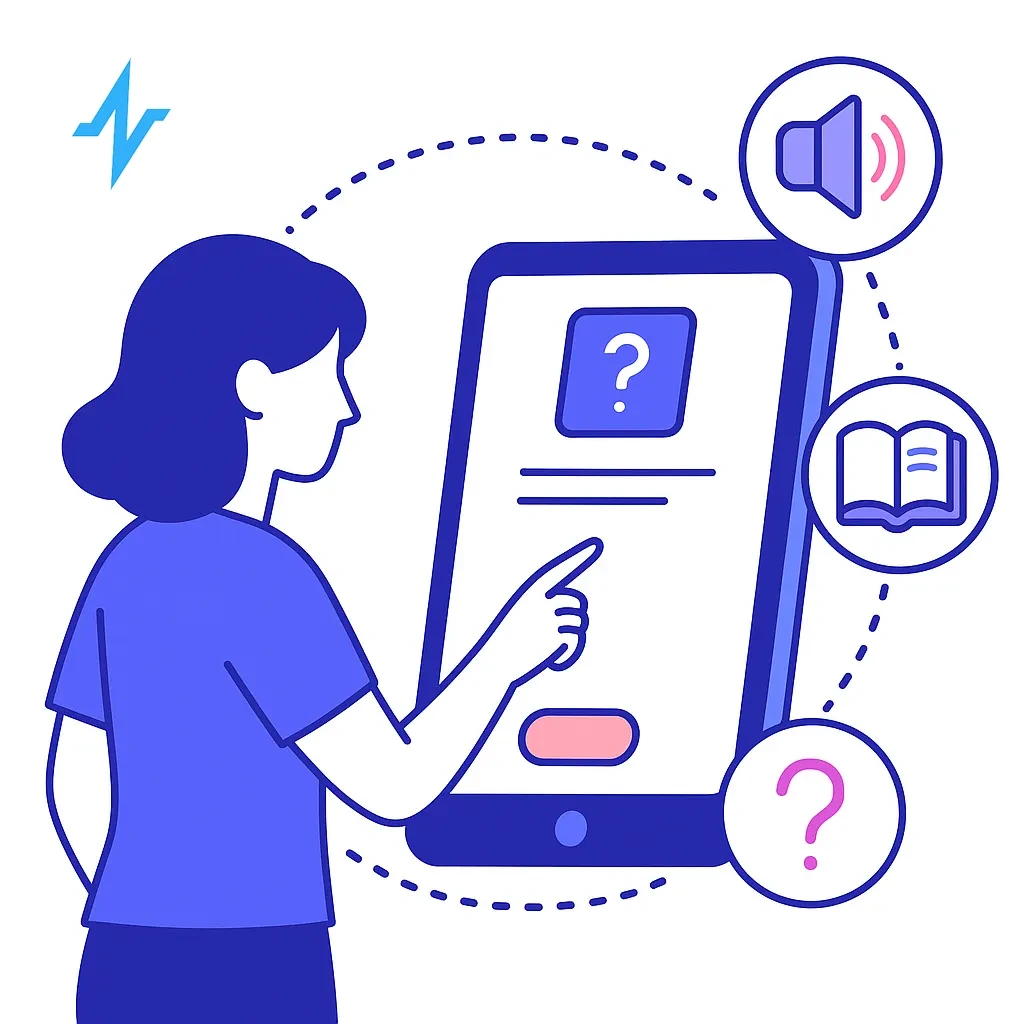
- Interactive quizzes and assessments
- Providing access to reputable online resources and support groups to enhance patient knowledge retention
- Using plain language in educational materials to ensure accessibility for patients of differing literacy levels
- Providing definitions of medical terms to enhance patient comprehension of care management strategies
Ensuring inclusivity in patient outreach involves providing information in multiple languages.
Supporting Self-Management
Self-management support encompasses emotional backing and strategies to increase self-efficacy. Digital health tools provide reminders for medication adherence and guidance for self-care, enabling patients to take control of their health.
Active patient engagement improves disease control, reduces hospitalizations, and enhances quality of life.
Engaged patients managing their chronic diseases and health conditions result in fewer emergency visits and lower healthcare costs.
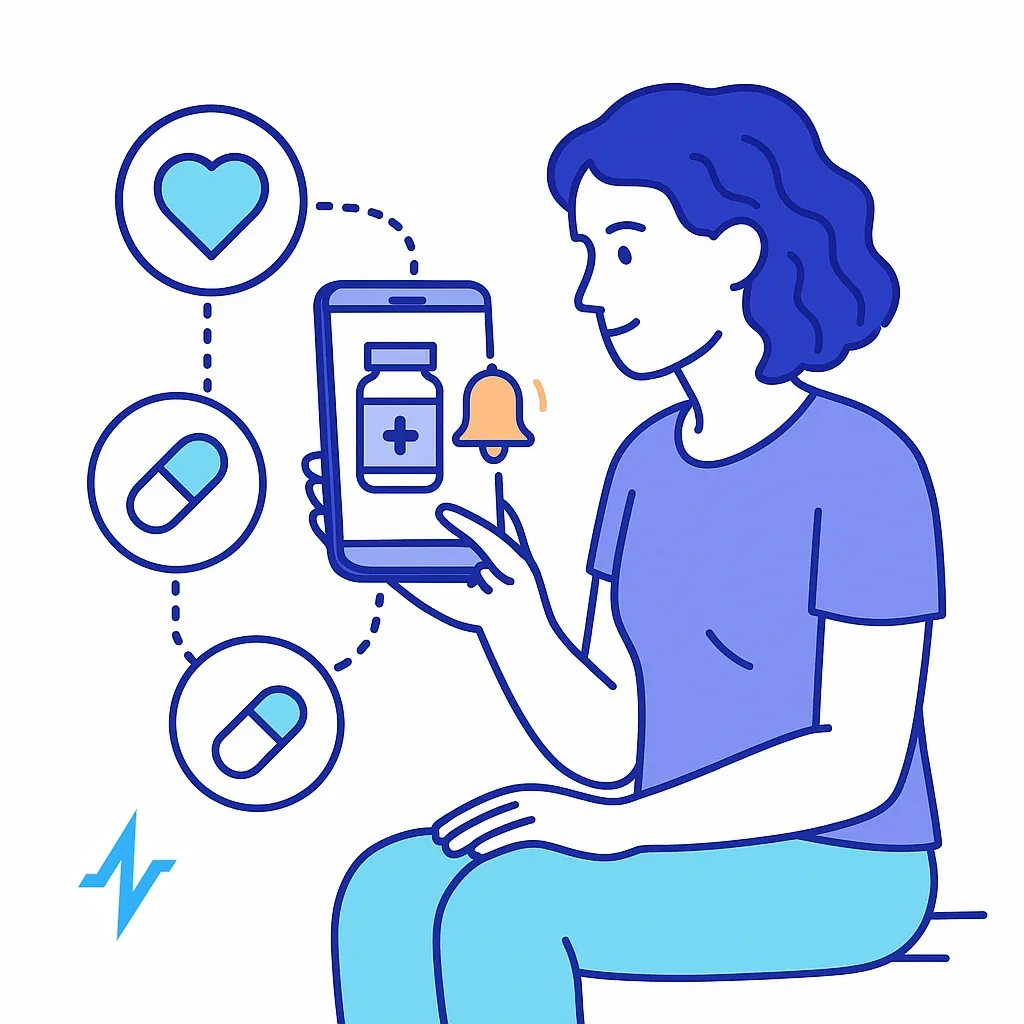
Healthcare providers can offer tools, resources, and techniques to support patients in managing their chronic conditions effectively.
Encouraging Shared Decision-Making
Involving patients in their care plans aligns treatments with their values and goals.

Allowing patients to participate in their care planning enhances their engagement and satisfaction.
Virtual care platforms enable patients to participate in developing their care plans, supporting value based care.
Encouraging shared decision-making ensures that patients feel heard and valued, ultimately leading to better health outcomes and improved patient satisfaction.
Supporting Patient Compliance and Motivation
Encouraging patients to stay compliant with their care plans and motivated to manage their health is a vital aspect of any patient outreach program. Healthcare organizations can support patient outcomes and satisfaction by delivering personalized education, tailored messages, and ongoing encouragement.
These efforts help patients understand their health conditions, adhere to medication regimens, and attend scheduled appointments for preventive care.
By connecting with patients regularly and addressing their concerns, healthcare providers can offer valuable feedback and support that leads to better health outcomes, reduced healthcare costs, and an enhanced patient experience.
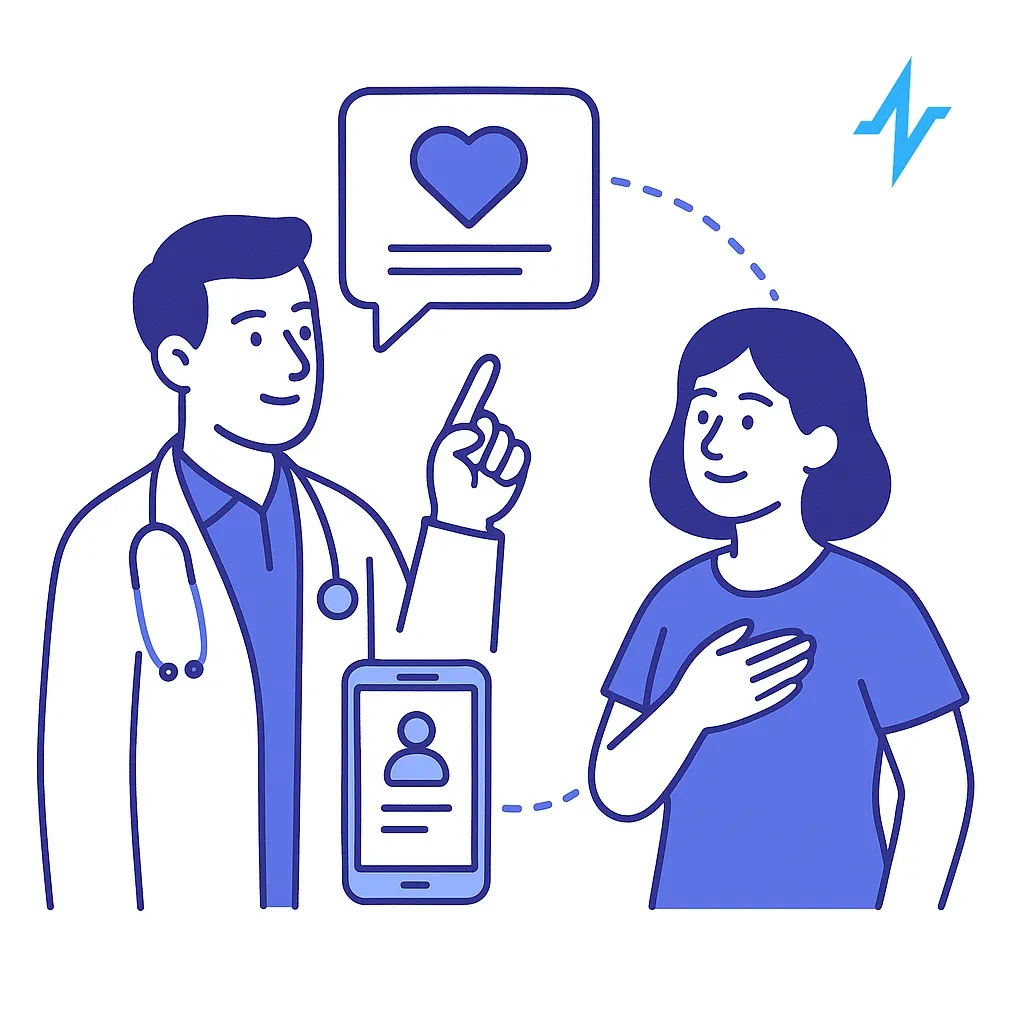
Effective patient outreach programs not only improve compliance but also foster lasting relationships that empower patients to take charge of their health journey.
Continuous Improvement Through Patient Feedback
Continuous improvement in patient outreach relies heavily on gathering and analyzing patient feedback. This feedback loop helps healthcare providers refine their strategies and ensure they meet the evolving needs of their patient population. By actively seeking and responding to patient feedback, healthcare providers can enhance patient engagement and satisfaction.
Gathering Valuable Feedback
Using direct patients interactions allows for real-time feedback, fostering immediate changes in care practices. Implementing feedback tools can enhance patient satisfaction by showcasing the provider’s commitment to listening and responding.

Automated collection of patient feedback can reveal insights into their experiences and service quality.
Incorporating feedback mechanisms like online surveys helps healthcare providers identify specific areas needing improvement.
Gathering patient feedback is essential for healthcare providers to continuously enhance care and service quality.
Analyzing Patient Data
Analyzing patient data helps identify areas of behaviors that can inform outreach strategies and improve care.
Data analysis enables healthcare providers to unveil patient behavior trends, aiding in better-targeted outreach strategies.
Utilizing analytics tools like the Pulse Engagement Cloud streamlines the process of assessing outreach effectiveness and patient responses to different engagement methods.
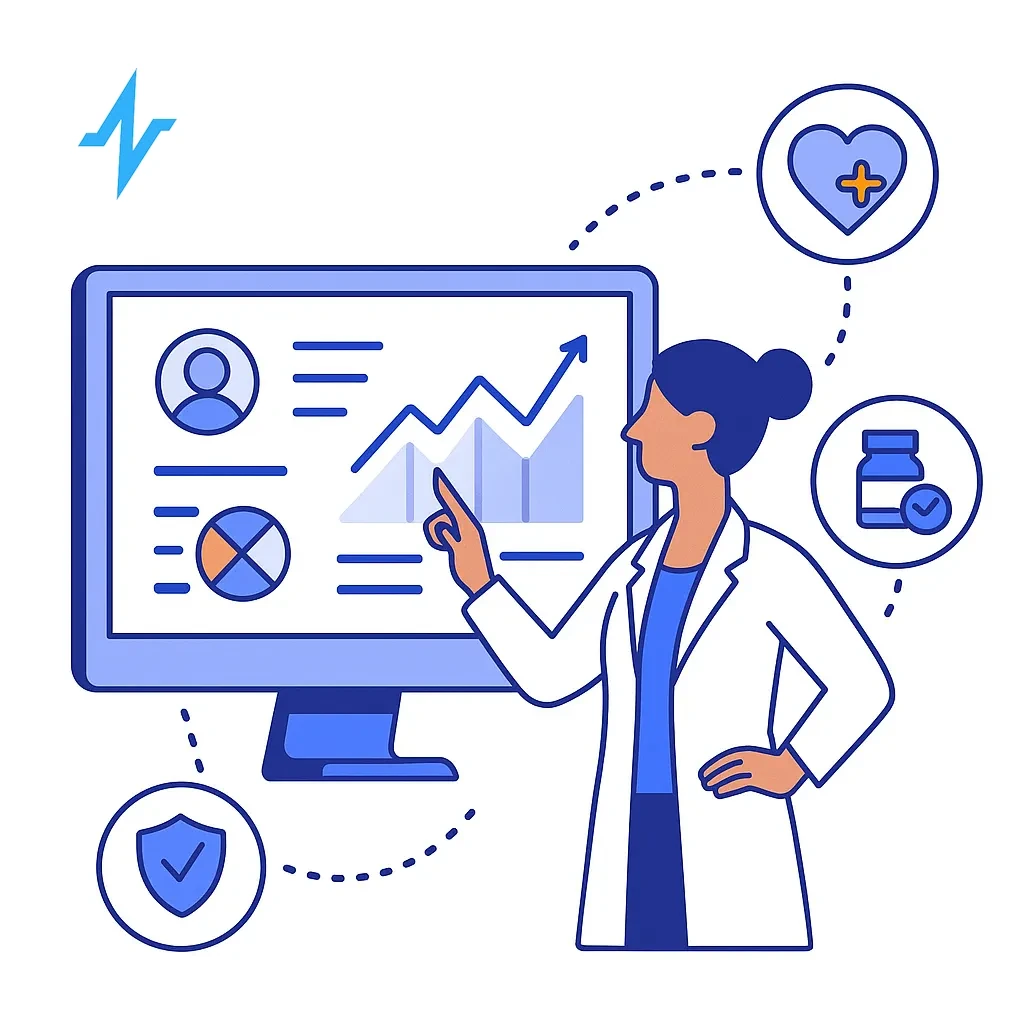
This analytics tool helps uncover valuable insights that can drive continuous improvements in patient outreach efforts.
Adapting Strategies Based on Feedback
Incorporating patient feedback into strategy development can significantly enhance healthcare engagement efforts. Providers can enhance patient engagement by:
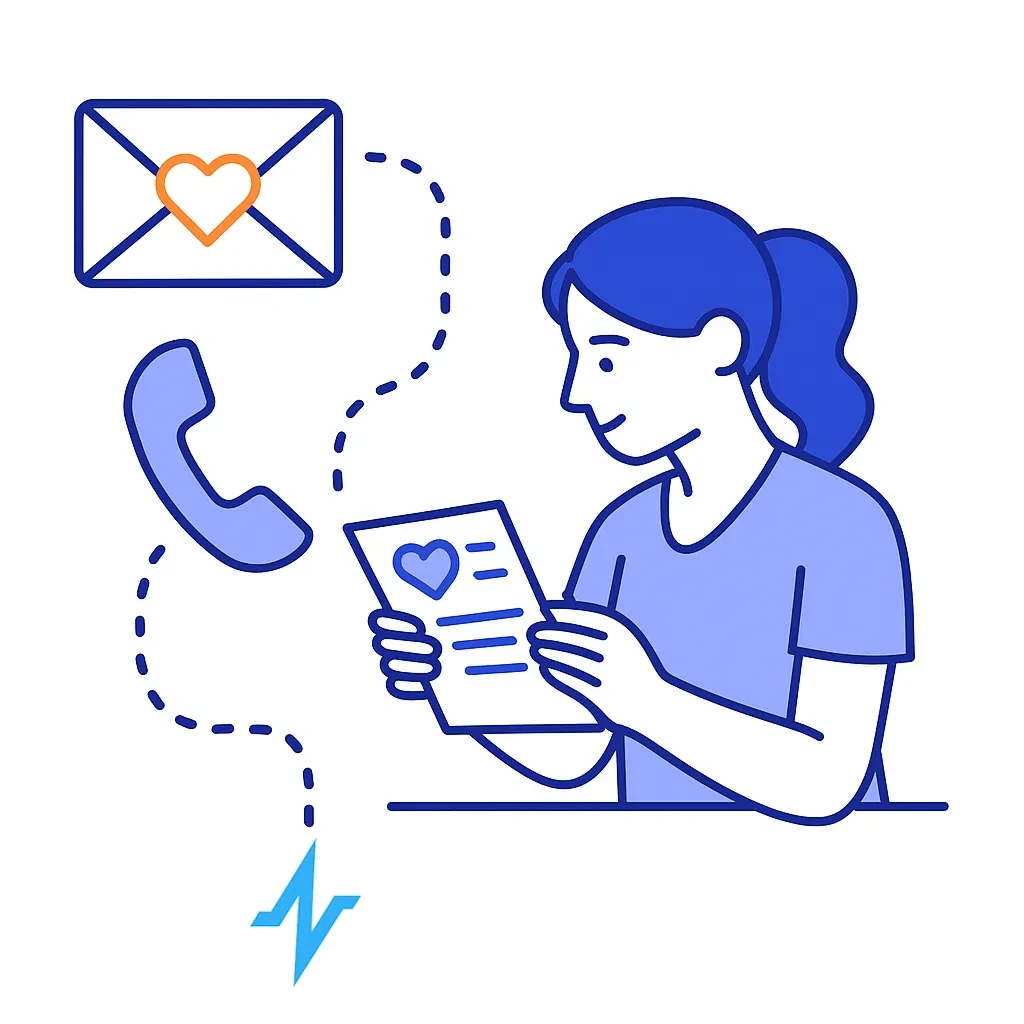
- Adapting their strategies based on insights gathered from patient feedback and data
- Utilizing data from various sources to tailor messaging
- Refining outreach strategies accordingly
Data-driven outreach provides proactive strategies for additional support and engagement. Patient feedback can be used to refine educational materials and enhance overall engagement.
The Role of Peer Support and Community Engagement
Peer support and community engagement play a crucial role in patient outreach. By integrating these elements, healthcare providers can create a supportive environment that enhances patient engagement and health outcomes. Peer support groups provide emotional backing and shared experiences, while community resources offer additional educational and social support.
Facilitating Peer Support Groups
Peer support groups connect patients with similar conditions for support and knowledge exchange. Benefits of participation include:
- Improved coping mechanisms and resilience among patients
- Significant reduction in feelings of loneliness and isolation
- Enhanced recovery and emotional well-being for peer supporters who help others
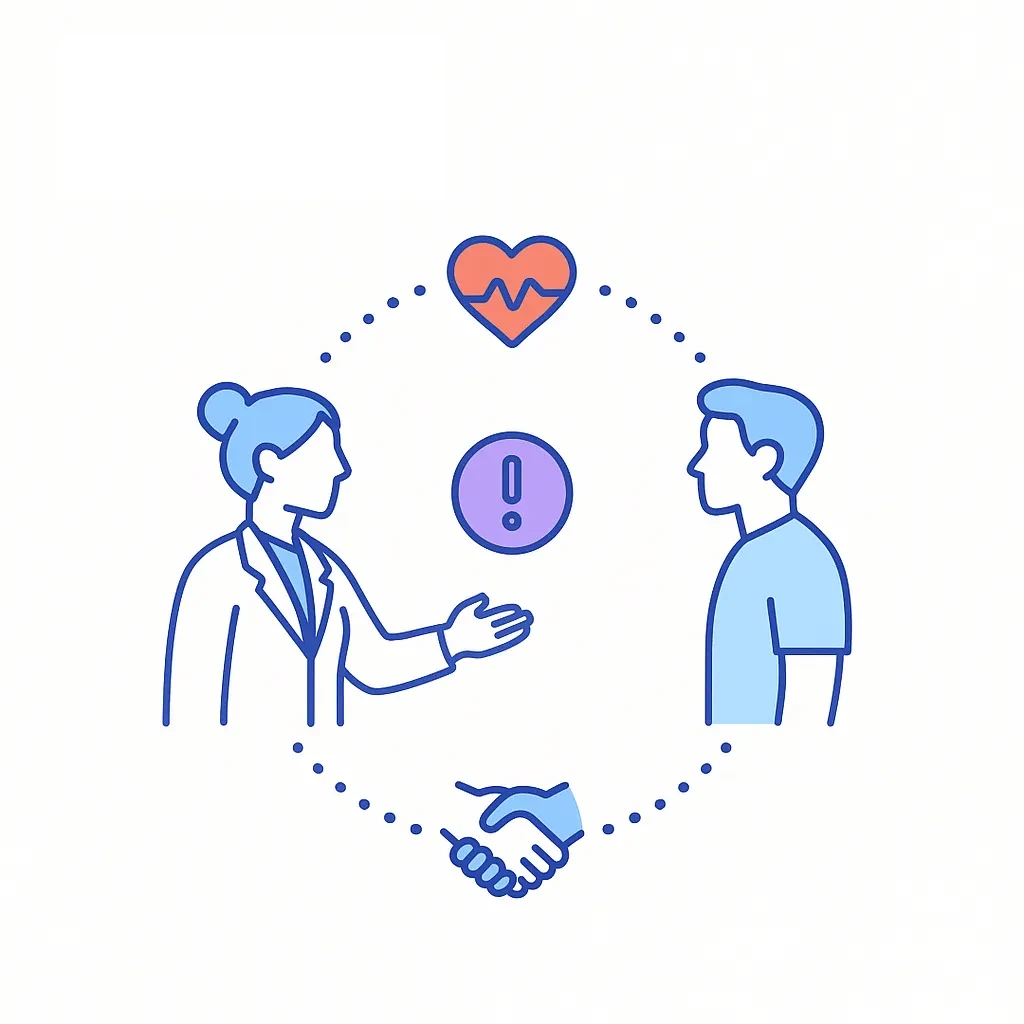
It is crucial to provide a safe atmosphere for patients engaging in online communities. Key aspects include:
- Maintaining respect among members, which is essential for effective moderation.
- Encouraging patients to engage in discussions.
- Encouraging patients to ask questions.
- Encouraging patients to share insights within the support groups.

Engaging with Community Resources
Collaborations with community organizations and healthcare organizations can enhance the overall patient outreach efforts by leveraging local expertise and resources. Collaborations with local organizations can amplify patient outreach efforts and provide essential education resources.
These partnerships can connect patients with additional resources and social services, which is vital for comprehensive health system support.
Benefits of Optimized Patient Outreach Programs
Optimized patient outreach programs offer numerous benefits, including improved patient outcomes, enhanced patient satisfaction, and reduced healthcare costs. By implementing effective outreach strategies, healthcare providers can ensure that patients are engaged, informed, and proactive in their healthcare journey.
Improved Patient Outcomes
Effective patient outreach interventions can lead to enhanced disease management and better overall health results.
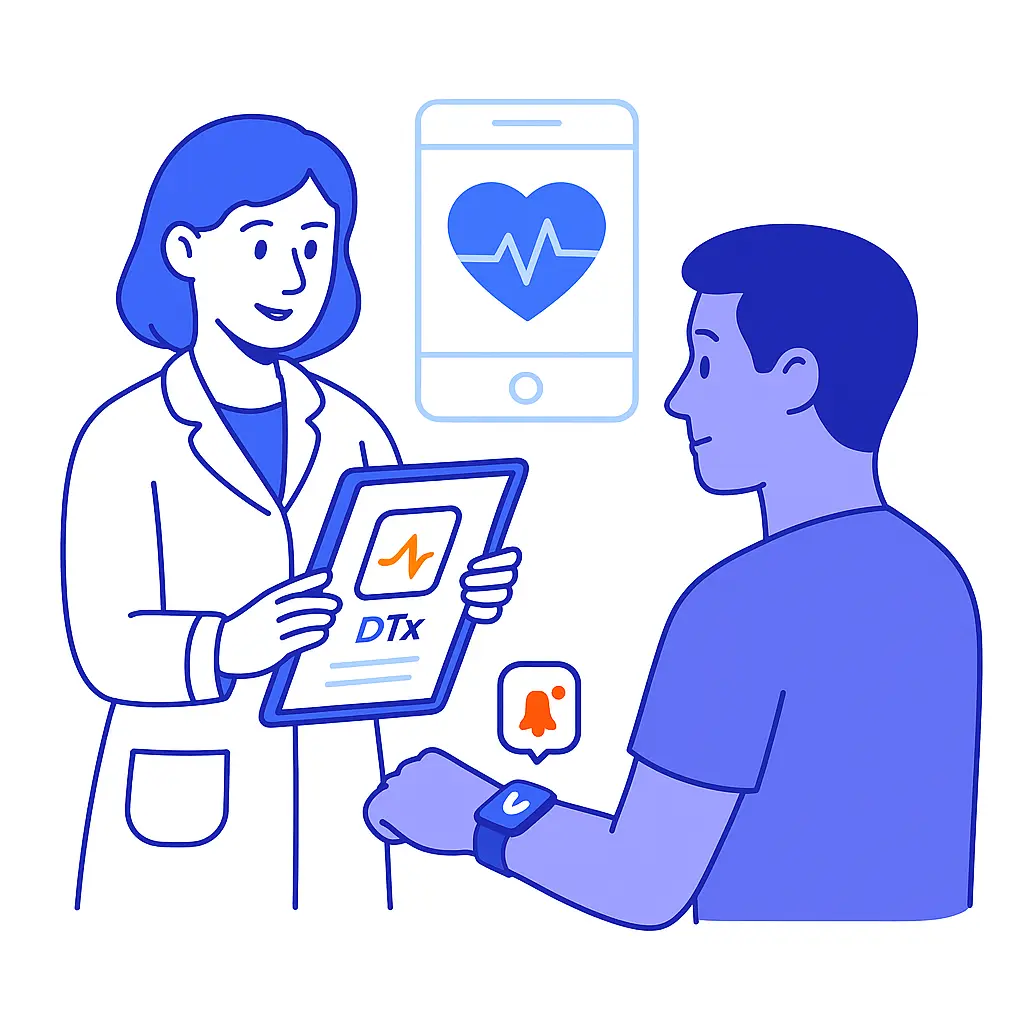
Automated outreach approaches can significantly boost preventive healthcare measures and chronic disease management.
Engaging patients through outreach initiatives can lead to increased rates of preventative screenings.
Overall, effective patient outreach strategies contribute to better health outcomes through improved medication adherence and preventive measures.
Enhanced Patient Satisfaction
Patients report increased satisfaction when they receive personalized and timely communication from their healthcare providers. Consistent communication through patient outreach helps to reach patients and fosters trust, strengthening the relationship between patients and healthcare providers.
Patients enjoy this enhanced interaction, which ultimately leads to better outcomes and addresses patient concerns, helping to improve satisfaction and align with patient preferences.
Improving the response rate through tailored outreach strategies leads to higher patient satisfaction, as more patients engage with and benefit from the communication.
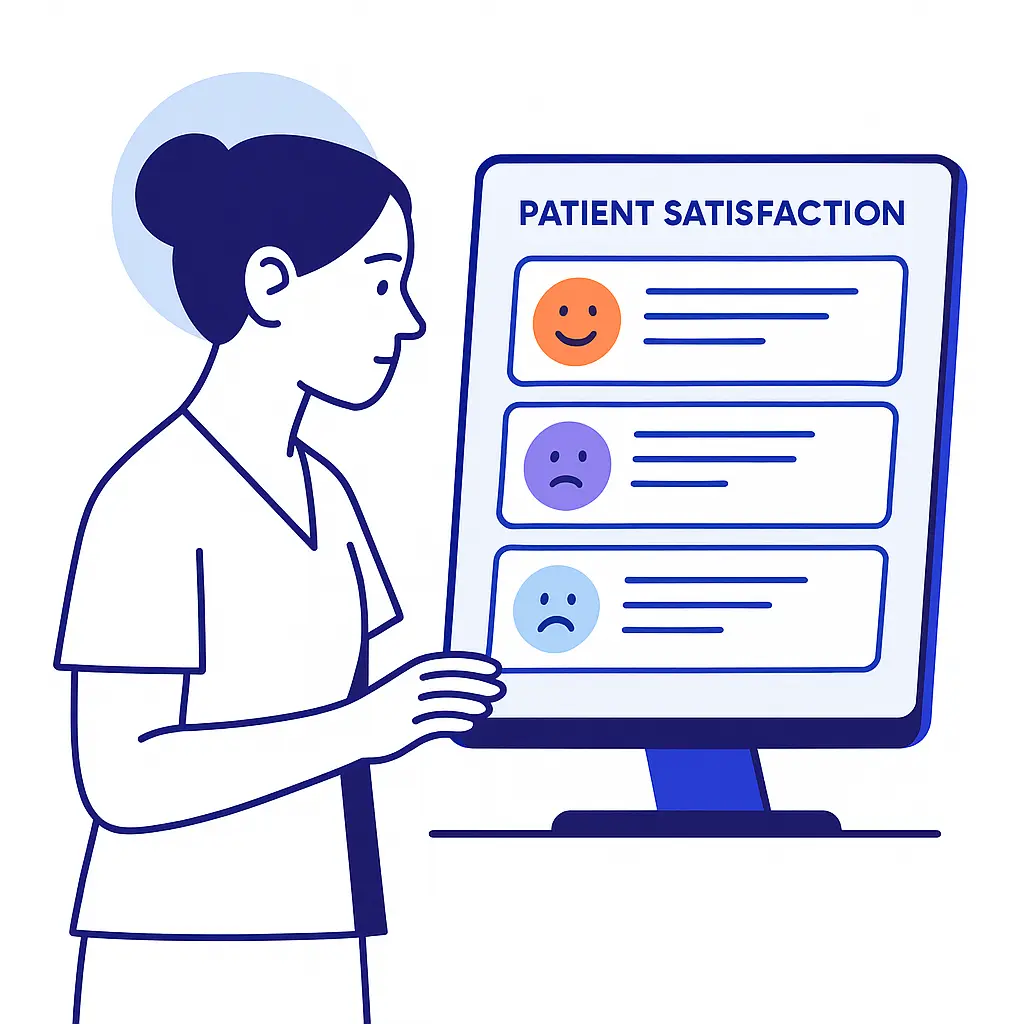
Consistent and personalized communication strategies are linked to increased levels of patient satisfaction. Combining personalized and consistent communication leads to a significantly enhanced patient experience, ultimately resulting in higher satisfaction levels.
Reduced Healthcare Costs
Improving patient adherence through outreach can significantly lower healthcare expenditures by decreasing the frequency of emergency care.
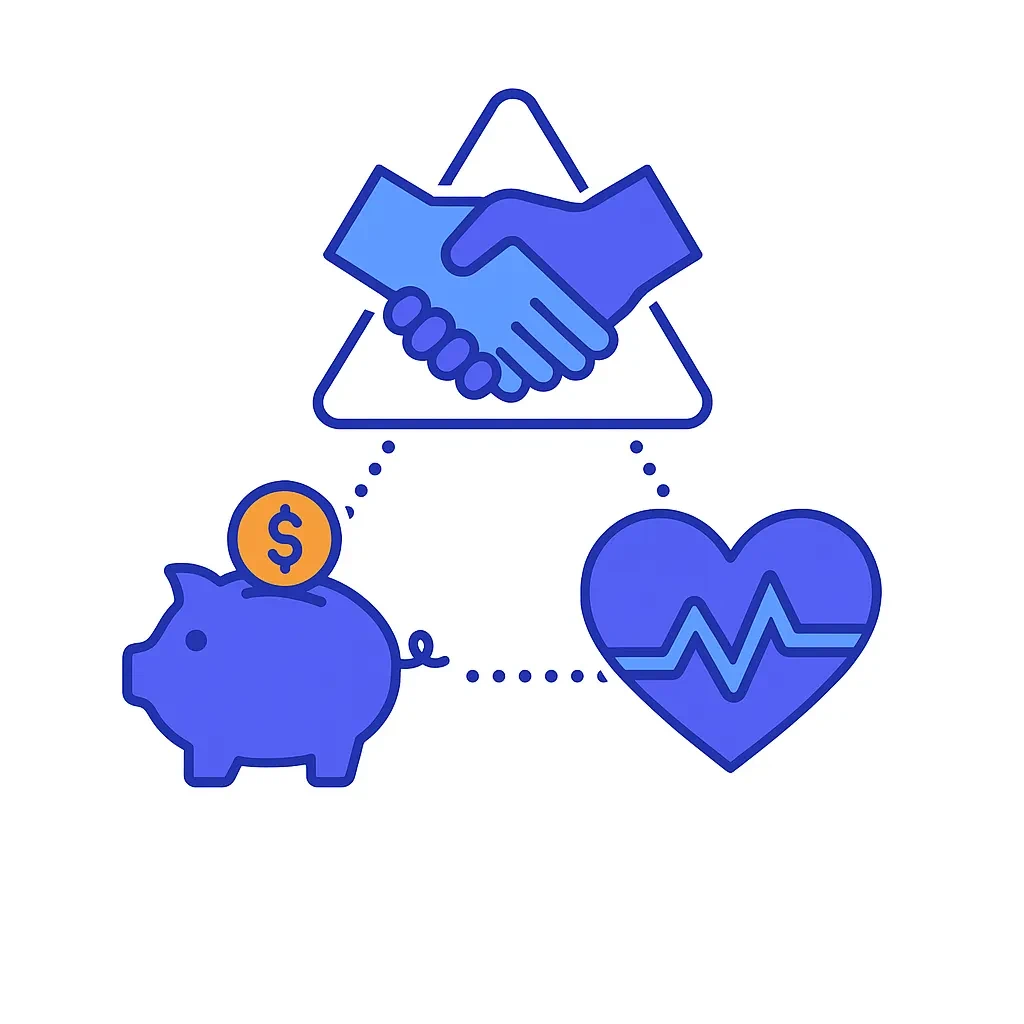
Increasing patient adherence through effective outreach can lead to significant reductions in emergency room visits and overall healthcare expenses.
Increased patient engagement through outreach can lower the frequency of emergency visits and hospitalizations.
Enhancing patient adherence and reducing hospital admissions results in significant cost savings for healthcare providers.
Pulse Health’s Approach to Patient Outreach
Pulse Health offers a comprehensive approach to patient outreach, leveraging technology and data-driven strategies to enhance engagement and outcomes. Their solutions are designed to support healthcare providers throughout the patient journey, from pre-launch to post-market support.
Comprehensive Engagement Solutions
The Pulse Engagement Cloud is a SaaS platform for building and automating omnichannel campaigns across email, SMS, fax, and direct mail. Pulse Data Access offers a turn-key solution to quickly connect brands with HCPs, delivering superior, high-quality data for precise, impactful messaging as a patient engagement vendor.
Pulse Health offers the following capabilities:
- Enables personalized, data-driven communication strategies from pre-launch to post-market support.
- Empowers life sciences teams to plan, launch, and automate highly personalized omnichannel campaigns.
- Centralizes brand data.
- Integrates with over 45 pharma-specific partners to ensure targeted and effective outreach.
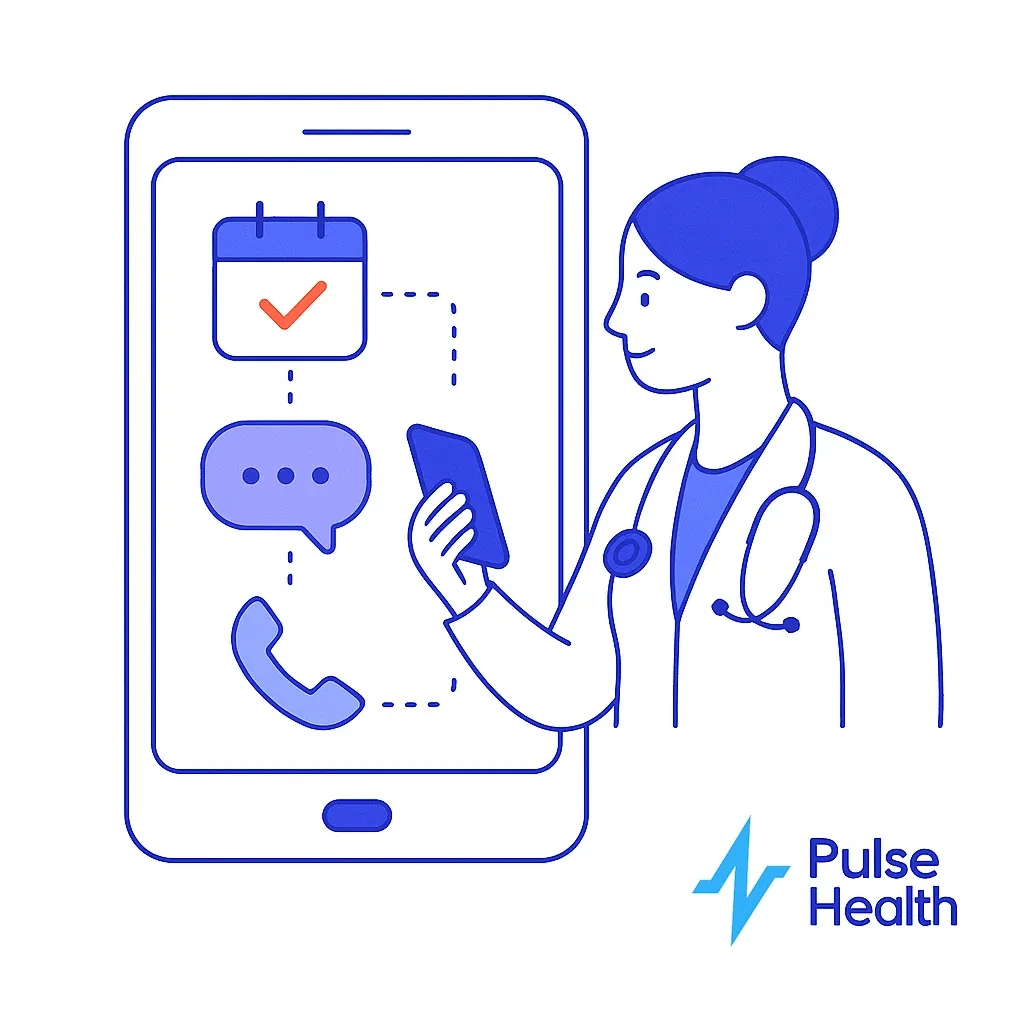
Real-Time Analytics and Insights
Pulse Analytics offers immediate visibility into the effectiveness of patient outreach campaigns, enabling real-time performance tracking to help track progress.

Pulse Analytics provides immediate performance tracking, enabling quick adjustments to marketing strategies based on real-time data.
Pulse Analytics delivers real-time visibility into campaign performance, healthcare professional behavior, and channel effectiveness.
Turning engagement data into strategic decision-making tools helps healthcare providers continuously improve their outreach efforts with Pulse Analytics.
Training and Certification Programs
Users can earn certification, master features, and enhance pharma engagement by completing the Pulse Certified program. The Pulse Certified program trains marketers and brand teams to maximize the Pulse platform’s potential. By equipping healthcare professionals with the knowledge and skills to effectively use Pulse Health’s tools, the program ensures that patient outreach efforts are both efficient and impactful.
Book a Demo to Learn How Pulse Can Help You Improve Patient Outreach Today
Pulse Outreach enables healthcare providers to automate outreach for bulk patient messaging, significantly reducing manual outreach time. The platform allows for easy integration with various data sources such as EMR and CRM, enhancing the flexibility of patient outreach.
Pulse Outreach features dynamic lists that refresh automatically, targeting specific patient cohorts for tailored communication.
Healthcare providers using Pulse Outreach reported improved patient appointment scheduling, particularly for Annual Wellness Visits.
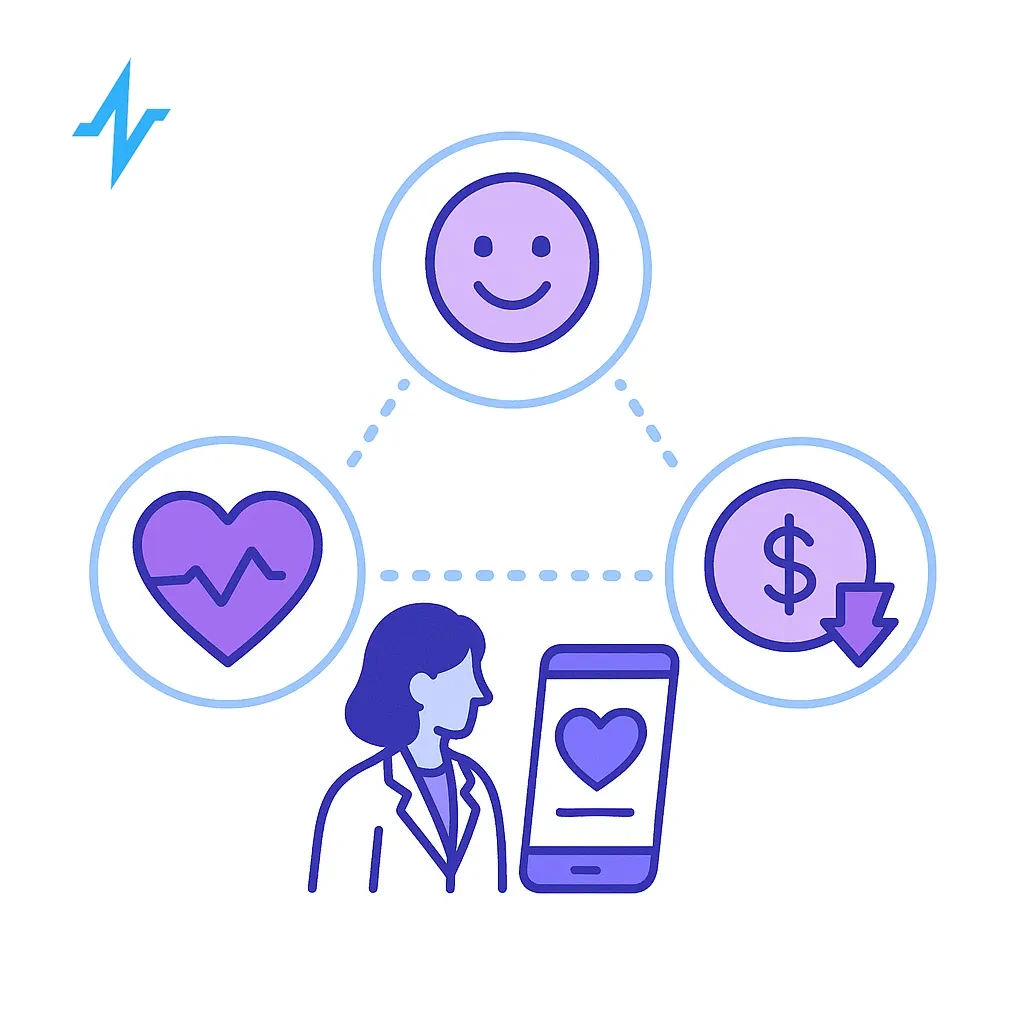
The platform supports various use cases, including medication adherence and care gap closure, to enhance patient engagement. Book a demo today to see how Pulse Health can revolutionize your patient outreach strategy.
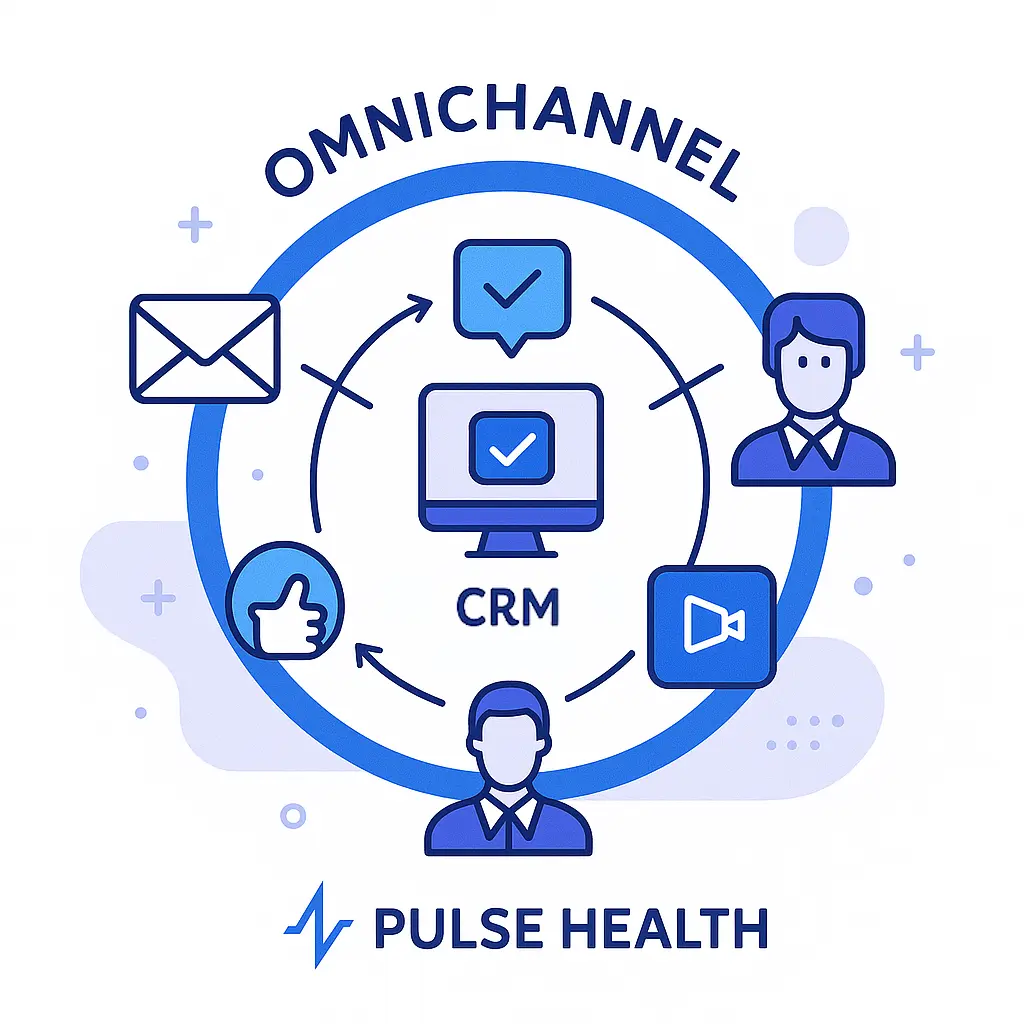
Optimizing patient outreach is essential for improving patient engagement, satisfaction, and health outcomes.
By incorporating personalized communication strategies, leveraging multi-channel communication, and utilizing technology, healthcare providers can create effective outreach programs.
Continuous improvement through patient feedback and the integration of peer support and community resources further enhance these efforts.
Pulse Health offers comprehensive solutions to support healthcare providers in their outreach strategies, driving better health outcomes and patient satisfaction. Embrace these strategies to transform your patient outreach and make a lasting impact on patient care.
Frequently Asked Questions
Patient outreach is an essential strategy that facilitates continuous communication to help patients manage their health effectively, prevent minor issues from becoming serious concerns, and improve overall engagement and satisfaction.
Personalized communication greatly improves patient outreach by addressing individual needs, which enhances engagement and response rates. Tailored messages ensure that patients feel valued and understood, leading to more effective interactions.
Technology is crucial in patient outreach as it enhances communication and engagement through digital tools, conversational AI, and remote monitoring, ultimately improving health outcomes.
Gathering patient feedback is crucial as it allows healthcare providers to tailor their services to meet patient needs effectively and enhance the overall quality of care. This process fosters a continuous improvement culture within healthcare settings.
Pulse Health enhances patient outreach through comprehensive engagement solutions and real-time analytics, allowing healthcare providers to improve patient engagement and achieve better health outcomes effectively.
